In this article
View 8 More +The Soft-Coated Wheaten Terrier originally comes from Ireland. They are friendly and playful and even considered a reasonable pet for first-time Terrier owners, although experience with training is generally recommended.
They can adapt to life in an apartment, but their coat requires plenty of grooming. Wheaten Terriers are energetic pups whose owners must provide enough mental and physical stimulation to keep them happy and healthy.
Breed Overview
Height:
17–20 inches
Weight:
30-45 pounds
Lifespan:
12–15 years
Colors:
Beige, gold, brown
Suitable for:
Active owners with time to dedicate to grooming
Temperament:
Affectionate, intelligent, lively, playful, energetic
The Soft-Coated Wheaten Terrier is a skilled working dog bred to hunt vermin. This all-purpose pup was also used by farmers to aid with herding, guard livestock, and more. Today, they are more likely to be kept as companion pets, but they retain many of the characteristics that made them such efficient working dogs.
While you might not want to put your Wheaten to work, you must offer outlets for your dog’s energy and mental acuity. Long walks will be well received, but they also benefit from more intense forms of exercise, such as agility courses and other canine sports.
Participating in these sports provides exercise, can assist with socialization, and will help build a bond between you and your new dog.
Soft-Coated Wheaten Terrier Characteristics

Soft-Coated Wheaten Terrier Puppies
The Wheaten is not a particularly popular or common breed in the U.S. and is rare in other countries. However, you can find breeders who specialize in raising Wheatens. Ensure that the parents have been screened for dysplasia since they are susceptible to elbow dysplasia.
Meet the puppy and mother, and pay particular attention to how the puppy reacts when first meeting you. They should be confident enough to want to approach you but not so confident that they run right up to you. Puppies should still look to their mothers for social guidance, so you can get a good idea of how a Wheaten puppy will interact with you by how the mother interacts.
The scarcity of the breed means you might end up paying a little more for a Wheaten, especially one with good parents. The highest prices are typically reserved for those with award-winning lineage. They can be challenging to train, and they have high energy and grooming requirements, which means that some first-time owners may think they require too much work to train and socialize. Therefore, several Wheaten Terriers can end up in shelters, allowing you to adopt rather than buy.
When adopting, you have fewer options in selecting the ideal age and sex, but it’s much cheaper than buying a Wheaten from a breeder.
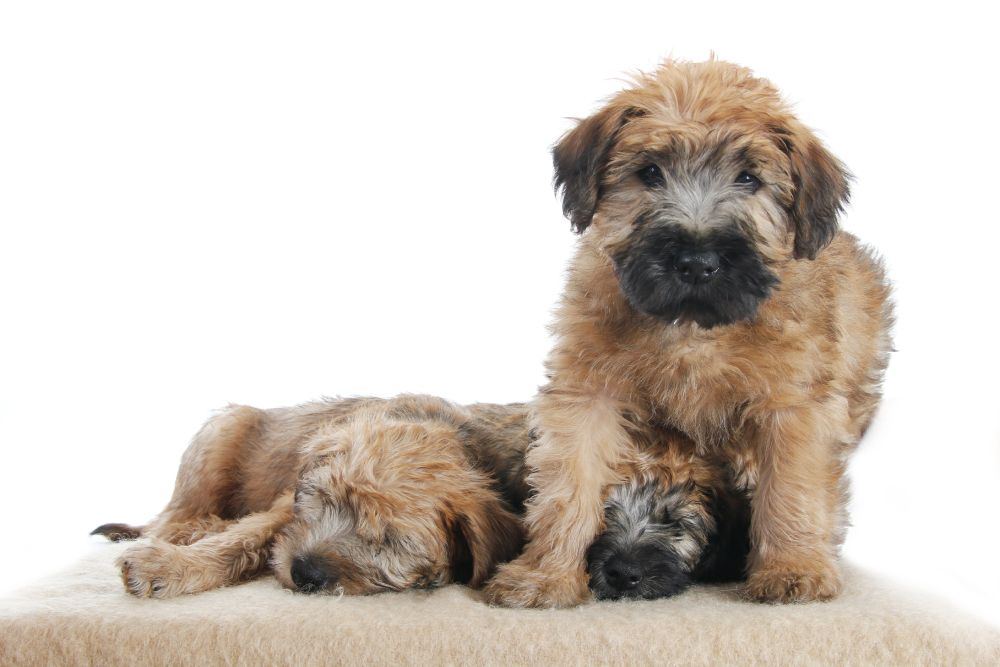
Soft-Coated Wheaten Terrier Origin & History
While hounds like Beagles and Irish Wolfhounds could only be kept by nobility in ancient Ireland, Terriers were kept by peasants. There aren’t many records of the Wheaten Terrier, but they have been bred and kept in Ireland for centuries.
Landowners bred Wheatens to perform various tasks on farms, including hunting vermin, herding, and protecting livestock. Despite a seemingly long history, the Irish Kennel Club did not recognize them until 1937. Less than 10 years later, in 1946, the first Wheatens made their way to the U.S., and the breed was recognized by the American Kennel Club in 1973.

Temperament & Intelligence of the Soft-Coated Wheaten Terrier
The Wheaten is a good working dog that can take on many tasks, but being a guard dog is not one of them. Although they might bark if strangers approach, it’s more likely to be a bark of excitement and encouragement than one of warning. This friendly pup usually gets along with everybody, whether they are family, friends, or delivery people. The desire to please also makes the Wheaten a good choice of companion dog, although it doesn’t necessarily mean they will be easy to train.
The Terrier in the Wheaten is energetic, and although they enjoy walks, they prefer to be off the leash running around with other dogs. Terriers are lively and they are always looking for something to do. They need mental stimulation and become bored and destructive if they’re neglected.
Although moderately sized for a Terrier, the Wheaten can adapt well to apartment living as long as they get enough exercise and are given plenty of time to smell and socialize outdoors.
Are These Dogs Good for Families? 👪
The friendly Wheaten makes an excellent pet and is ideal for individuals, couples, and families with children. Although care should always be taken with young children and any dogs, the Wheaten is a hardy little pup that loves to play and is very affectionate.
You will need to teach ground rules, especially regarding whose toys are whose, or your Wheaten will likely try to steal your child’s toys. They aren’t aggressive dogs and aren’t typically overprotective of family, so your child can safely have friends around to play, even if the games get a little rough, and there shouldn’t be any reactive behavior.
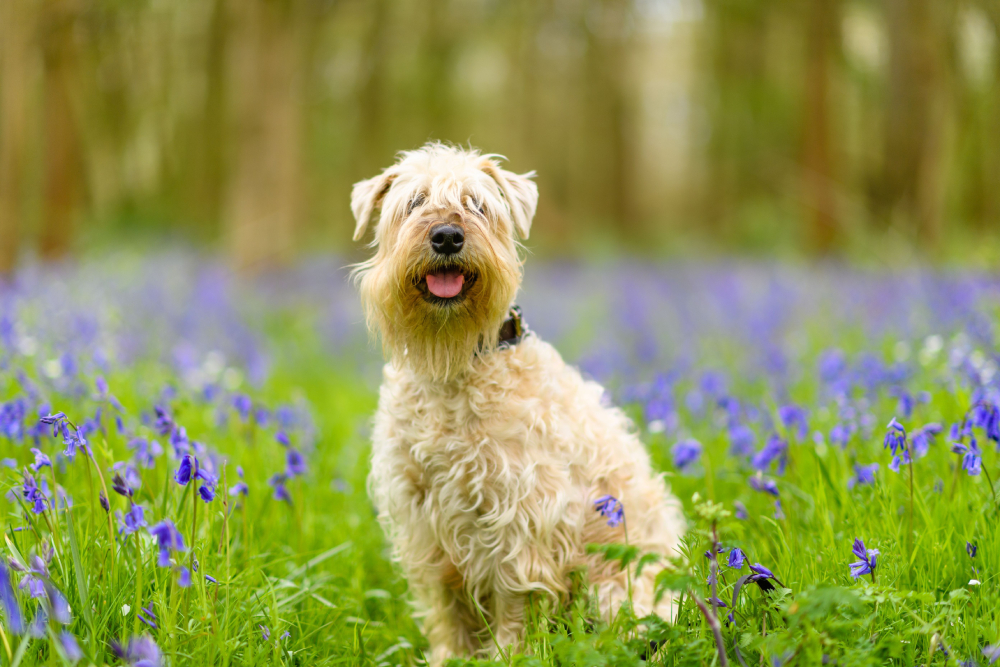
Does This Breed Get Along with Other Pets?
As well as getting on with children, adults, and strangers, the Wheaten can do very well with other dogs. They enjoy socializing outside the house and can also form close bonds with other family dogs, especially if willing to join the Wheaten’s fun and games.
The Wheaten can also live with cats, but introductions should be made when both animals are as young as possible and taken gradually. However, the dog’s history as vermin control means they have a high prey drive, and they cannot be trusted around smaller animals like rats, gerbils, or birds. This is true in the house, but is also true while out walking, and you will need exceptional recall if you intend to let the Wheaten off the leash while out.

Things to Know When Owning a Soft-Coated Wheaten Terrier:
The Wheaten Terrier is a working breed but is now more commonly seen as a companion rather than a farm dog. They enjoy spending time with their humans, will get along with most people and dogs, and can live in multi-pet households.
However, they are high-maintenance pets. They need a reasonable amount of exercise, require mental stimulation, and their coats require ongoing maintenance to prevent them from getting matted and becoming uncomfortable. Below, we’ll look at some of the factors you need to consider before taking adopting a Wheaten.
Food & Diet Requirements 🦴
It’s best for your Wheaten to eat high-quality dog food, and they need approximately 2 cups per day, split into two or three meals. If you feed treats, they should not account for any more than 10% of your dog’s daily calories, and you should reduce the amount you feed accordingly.
With canned food, follow the guidelines on the packaging and weigh your dog to ensure you feed an appropriate amount of food. It is also possible to feed a combination of dry and wet food. Dry food is nutritionally complete and has a longer shelf life than wet food. However, some dogs find wet food more palatable.
Exercise 🐕
The energetic Wheaten Terrier needs moderately high levels of exercise and is an athletic breed. Walk your dog for at least 60 minutes a day, ideally up to 90 minutes, and look for other, more engaging ways to exercise them.
The Wheaten can do very well in agility-based events, herding, and other canine sports. Sports provide a great release of energy, which can prevent your Terrier from getting bored, reduce unwanted behaviors, and offer a fun activity for both of you to enjoy. Playing fetch or other games in the yard will also wear out your pup and challenge their mind. When you’re indoors, you can give your Wheaten an interactive game to provide mental stimulation.
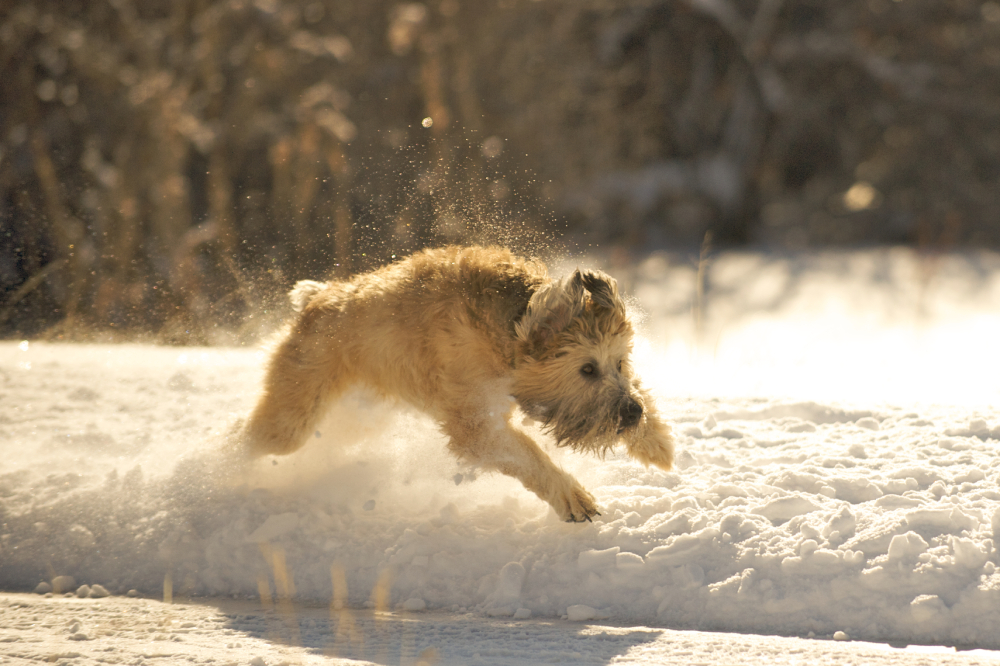
Training 🎾
Training is somewhat unpredictable with the Wheaten Terrier. They’re an intelligent breed that generally likes to please their owner. However, Terriers can get bored of training if you don’t make it fun and exciting. Start training from a young age and use games to keep your dog engaged.
Start attending puppy classes when your dog is young. You can use the opportunity to socialize with other dogs and people while learning the basics of dog training. Recall will be an important part of training a Soft Coated Wheaten Terrier because this lively dog will want to chase small animals. You should also concentrate on basic commands like sit and stay. These can help get you out of a lot of tricky situations.
Grooming ✂️
One of the most challenging aspects of owning a Wheaten is keeping that coat in check. They only have a single layer of fur that sheds often. Brushing helps control shedding by removing dead hairs in a controlled manner. Daily grooming will not only eliminate dead hairs but also enable you to give your Wheaten a soft, well-groomed look.
You will need to trim the facial hair to keep it under control, and the beard will need a lot of cleaning. Food and other debris will gather in the facial hair, and this can make it a very challenging aspect of Wheaten ownership.
You will also need to trim nails, typically every 2 months, and brush your dog’s teeth three times a week to reduce the likelihood of dental disease.
Health and Conditions 🏥
The Soft-Coated Wheaten Terrier is a generally hardy dog, but they are prone to some illnesses and conditions. One of the more common ailments is elbow dysplasia. Elbow dysplasia typically occurs when the bones that meet at the elbow joint are not aligned or grow awkwardly. It can cause lameness and, eventually, lead to arthritis.
Catching it early may allow your vet to operate and correct the problem, but you should ensure that the parent dogs were screened for dysplasia. Dogs with dysplasia should not be used for breeding.
- Addison’s Disease
- Allergies
- Cataracts
- Elbow Dysplasia
- Kidney Problems
- Protein Wasting Disease
Male vs Female
The male Wheaten will grow a little bigger and heavier than the female. While individual character, as well as socialization and training, are more likely to determine a dog’s character, some owners claim males are more likely to be territorial, more prone to wanderlust, and more playful.
Females are less likely to try and escape but can be moodier.
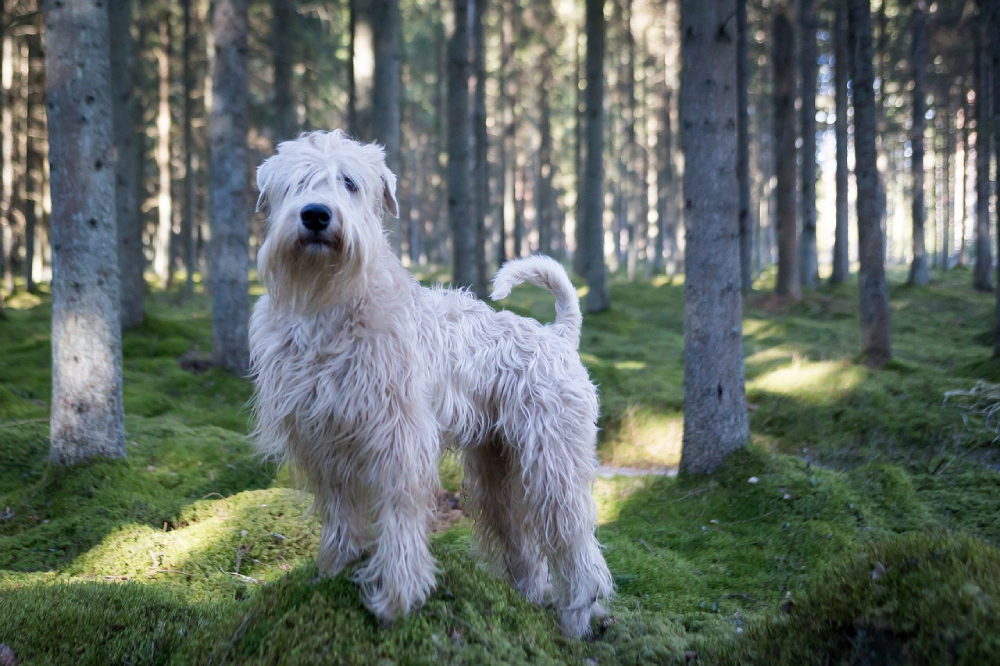

3 Little-Known Facts About the Soft-Coated Wheaten Terrier
1. They Were Once Known as the Poor Man’s Irish Wolfhound
In Ancient Ireland, only landowners could own Hounds, including the popular Irish Wolfhound. As such, other classes owned Terriers like the Wheaten Terrier, and their popularity with the lower classes earned them the nickname of the poor man’s Irish Wolfhound.
2. They Used to Have Docked Tails
At this time, owners would also dock the tails of their Wheaten Terriers because this showed tax collectors that they were not liable to pay the dog tax that some breeds attracted.
3. They’re Born with Dark Coats
Although they are known for their pale beige coats as adults, Soft Coated Wheaten Terriers are born with dark coats. By the time they reach approximately 2 years of age, the coat has lightened to the color of wheat.

Final Thoughts
The Soft Coated Wheaten Terrier is a fairly uncommon breed in the U.S. and was accepted by the AKC in 1973. The breed was raised as a working dog in Ireland, where they were used to perform multiple tasks on farms, including vermin hunting, herding, and protecting livestock.
They are friendly and playful, as well as loving and loyal to their owners. However, they have high exercise and grooming requirements, which means they certainly aren’t a low-maintenance choice. After they’re thoroughly trained, the Wheaten is considered one of the easier Terriers to keep as a family pet.
Featured Image Credit: Joseph Hendrickson, Shutterstock
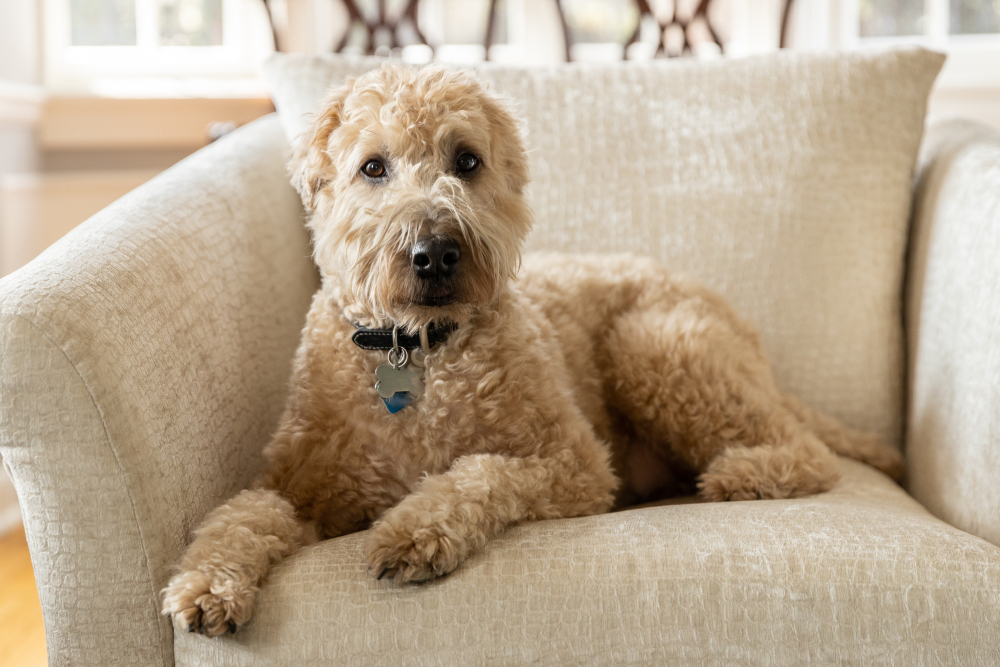





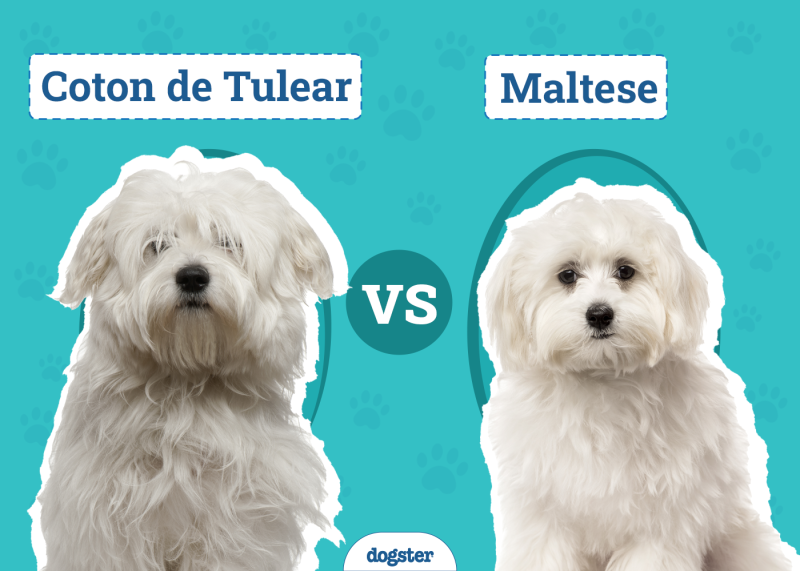




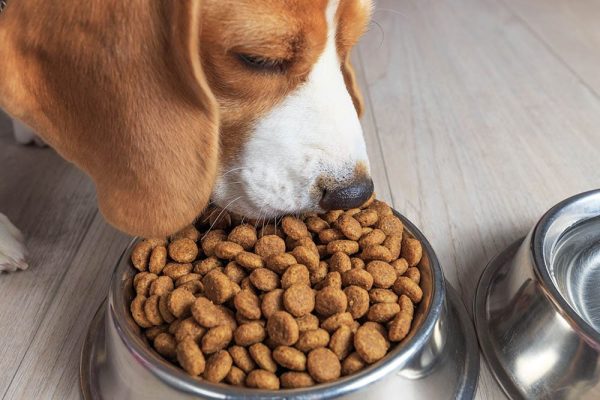
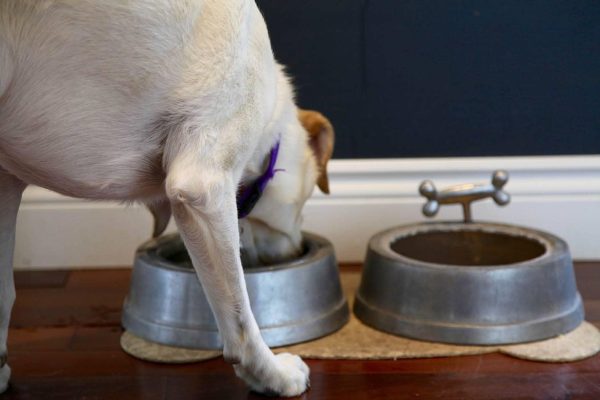

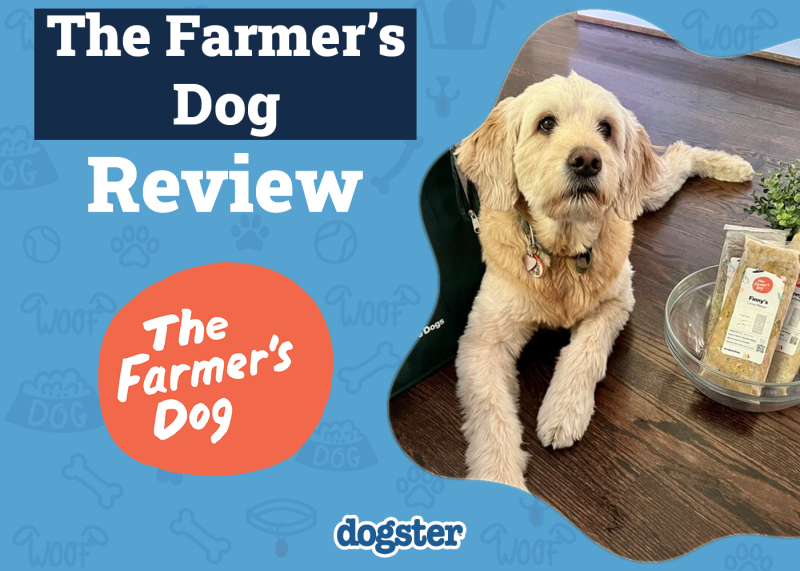




2 Responses
WHEATEN TERRIERS are PERFECT DOGS. Single-Coat Hypoallergenic, Friendly, Funny, Smart, Loyal, Protective… and they are less popular than 50 other breeds? I’m seriously baffled by this. People want Golden Doodles because they don’t know about WHEATEN TERRIERS! My Wheaten “Dr. Lucky MonkeyBear” is 8-years-old and he’s so smart that he did my taxes last month.
You're not wrong Tyger! I'm as surprised as you are that this breed isn't way more popular. And “Dr. Lucky MonkeyBear”…that name is amazing. 🙂